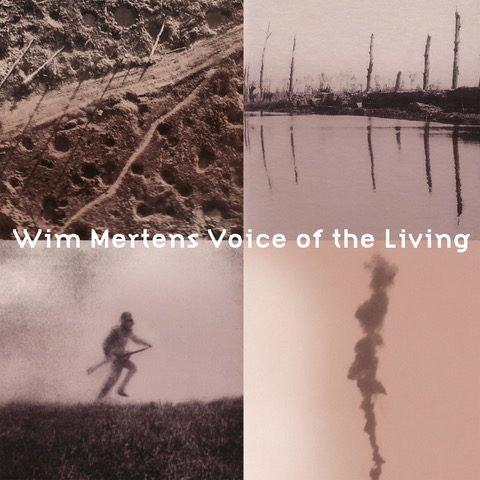The Belgian composer Wim Mertens releases his 67th album, “Voice of the Living”, a tribute to all the victims of wars.
A month ago Voice of the Living, the new album by Belgian composer and pianist Wim Mertens, was released. It is a composition that had been commissioned ten years ago by the Federal Public Service of the Chancellery of the Belgian Prime Minister, to be part of the acts to commemorate the centenary of the outbreak of the First World War. The premiere of the work took place on October 28, 2014 in the Cathedral of San Martín in the Flemish town of Ypres (Ieper in Dutch) and Mertens wanted to dedicate the work to the inhabitants of the city, which almost a hundred years ago was turned into a battlefield during the so-called Great War, in which five bloody military combats took place between December 1914 and August 1918.
The theme of Mertens’ work is the memories and experiences of soldiers and victims of war, which can only be evoked and sung by the living, hence its title, which pays tribute to all the victims of this gruesome war, especially in the battles that took place in Ypres/Ieper, where the mortality far exceeded limits never before imagined and the cruelty exceeded the most abject levels – that was where military attacks using poisonous gases were experienced for the first time. Despite the 175,000 corpses buried in the different cemeteries located in the so-called Ypres Salient, the music of Voice of the Living does not go through the dramatic tones of a requiem that would have been predictable. The record does show, on the other hand, the melancholic style that does mark a good part of Mertens’ work, in which the repetitive elements of the first American minimalism are intermingled – to which he dedicated a musicological essay, American Minimal Music: La Monte Young, Terry Riley, Steve Reich, Philip Glass, originally published in Belgium in 1980 and translated to English in 1983– and its musical roots from the Flemish musical baroque.
The Flemish composer explains on the record that his starting point is not that of the professional soldier, but the point of view of the “ordinary man” led to suffer unsuspected wartime vicissitudes. It also explains the relationships between the four traditional elements (earth, water, air, fire) and their comparison with war situations: the stagnation of the battlefront in the trenches (earth); the torrential rains that turned the battlefield into pure mud (water); airstrikes and mustard gas (air) and crossfire and mortar blast violence (fire). Mertens explores the link between these four elements and the four groups of musical instruments used: the harp, the strings, the winds and the percussion… and the voice, which except for the first theme, Too Good, Too Loose, stars in the remaining nine pieces of the album, with his well-known and characteristic melodic lines sung in an unintelligible language that wordlessly suggests different moods.
